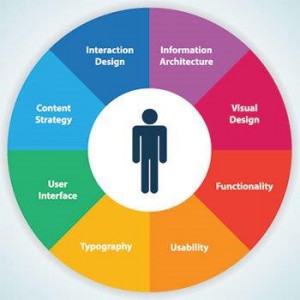THE USER EXPERIENCE AS A KEY TO SUCCESS
March 25, 2014
 The ‘user experience (UX)’ is a branch of science that focuses on a deeper understanding of users and business objectives of a project, improving the interaction between the user and their perception of the quality of the service; according to its principles the information must be Useful, Usable, Desirable, Findable, Accessible and Credible. The success of your application will always depend on the satisfaction of users, and this is gained by offering them what they want and the way that they want it!
The ‘user experience (UX)’ is a branch of science that focuses on a deeper understanding of users and business objectives of a project, improving the interaction between the user and their perception of the quality of the service; according to its principles the information must be Useful, Usable, Desirable, Findable, Accessible and Credible. The success of your application will always depend on the satisfaction of users, and this is gained by offering them what they want and the way that they want it!
For beginners, aesthetics is concerned with anything that appeals to the senses. As user experience professionals, we must consider every stimulus that might influence interactions. Aesthetics examines our affective domain response to an object or phenomenon, so, how do aesthetic design choices influence understanding and emotions, and how do understanding and emotions influence behavior?more–>
![]() Cognition is “the process of knowing.” We learn how to understand the world around us: What happens if I push that, or this? Cognitive science studies how people know things, and aesthetics plays a critical role in cognitive processing. As an example, which one of these on the right side is clearly a button? And why?
Cognition is “the process of knowing.” We learn how to understand the world around us: What happens if I push that, or this? Cognitive science studies how people know things, and aesthetics plays a critical role in cognitive processing. As an example, which one of these on the right side is clearly a button? And why?
Here, aesthetics communicates function: button gradient, shadow and 3d aspect are an affordance, characteristic. Similarly, there’s a reason good confirmation screens have a check mark and are likely to involve some shade of green: Green is good. Red is bad, Yellow is something to think about; this is based on Occidental cultural behavior! Culture has influence on those decisions.
![]()
![]() Now again, aesthetics not only affect the cognitive process. Look again at the buttons on the left side. Surely now they are two buttons, both of them saying the same thing, but which is the one that you probably push to search?
Now again, aesthetics not only affect the cognitive process. Look again at the buttons on the left side. Surely now they are two buttons, both of them saying the same thing, but which is the one that you probably push to search?
A famous neurobiologist Antonio Damasio wrote:
“…emotion is not a luxury: it is an expression of basic mechanisms of life regulation developed in evolution, and is indispensable for survival. It plays a critical role in virtually all aspects of learning, reasoning, and creativity. Somewhat surprisingly, it may play a role in the construction of consciousness.”[1]
This is because Products have a personality! Consider this:
- People identify with (or avoid) certain personalities.
- Trust is related to personality.
- Perception and expectations are linked with personality.
- Consumers “choose” products that are an extension of themselves.
- We treat sufficiently advanced technology as though it were human.
As humans we constantly project our feelings and thinking on the world around us! So, we can state that UX is based on, among many things, the principles of aesthetics and those principles as a basis for success.
[1] Emotion and Feelings: A Neurobiological Perspective by Antonio Damasio

 English | EN
English | EN 